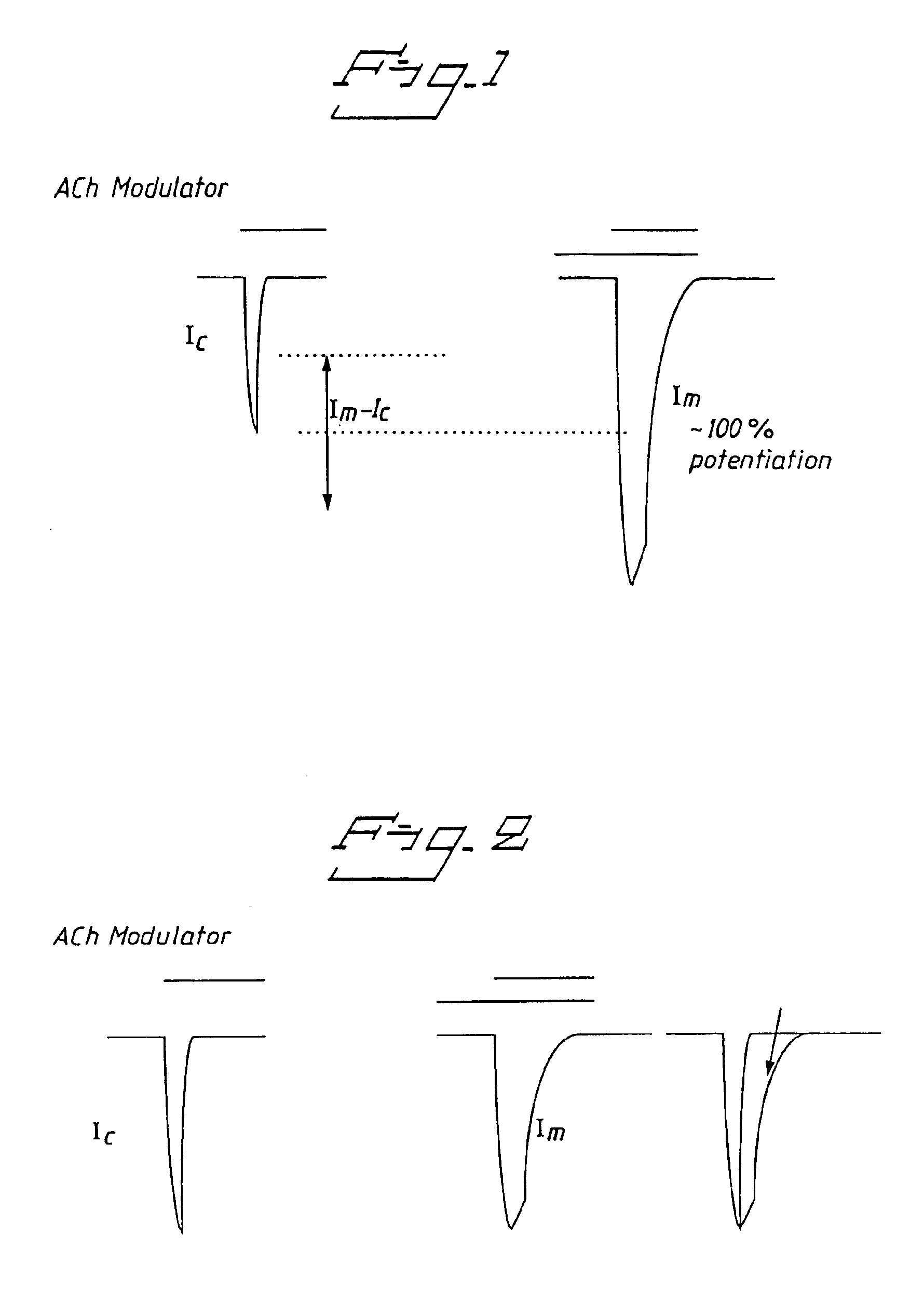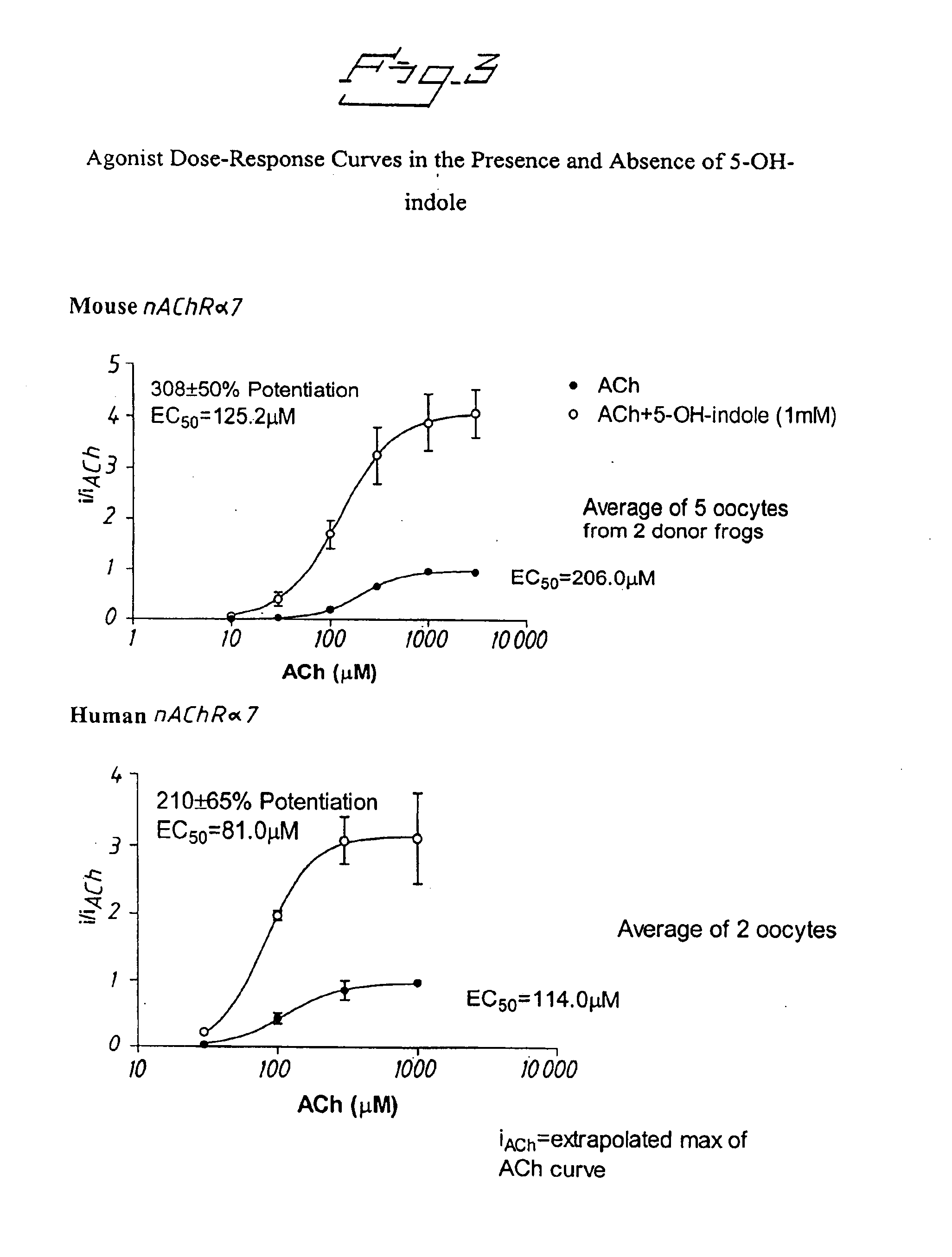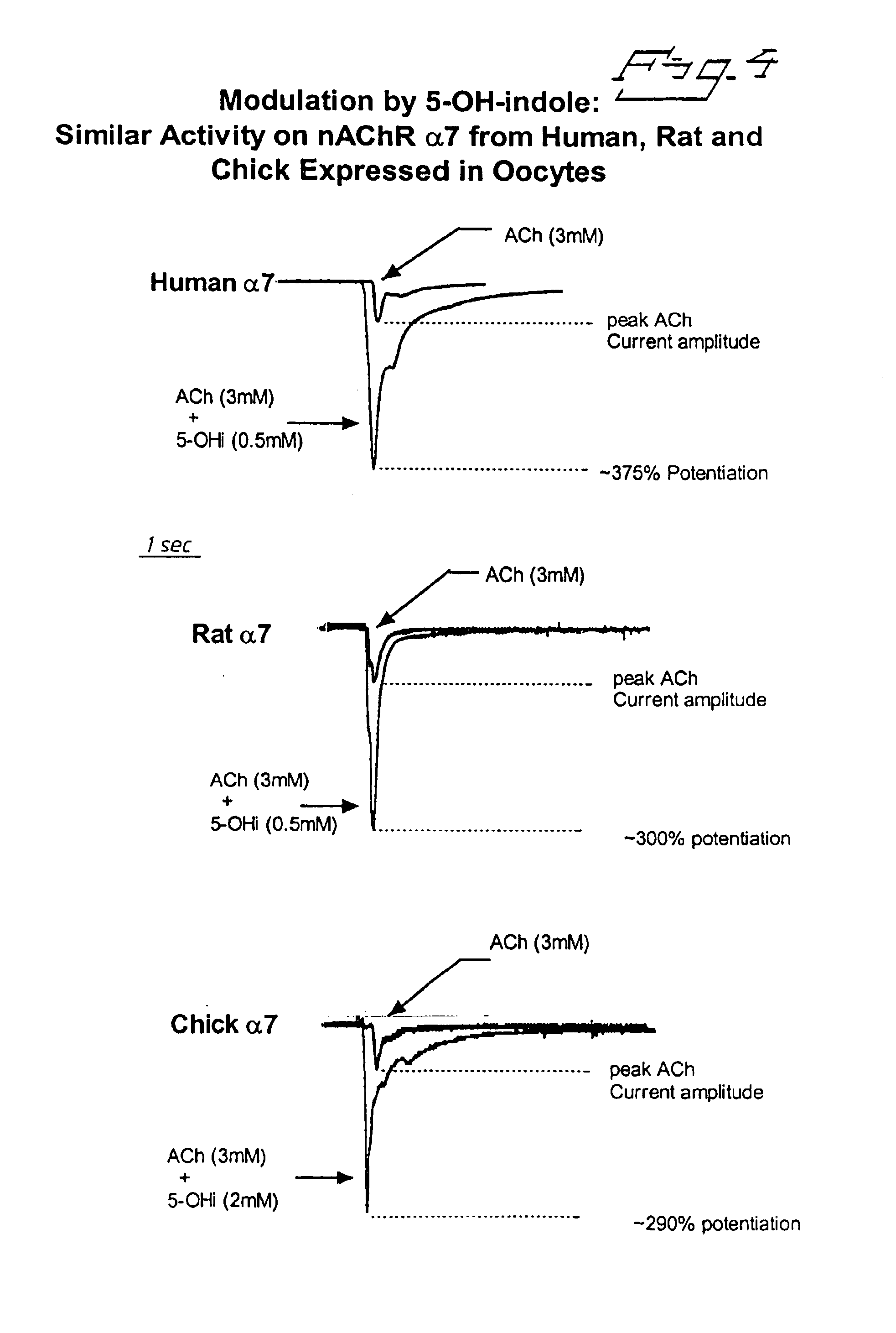Positive modulators of nicotinic receptors
a nicotinic receptor and positive technology, applied in the field of pharmaceutical compositions, can solve the problem of not producing long-term inactivation, and achieve the effects of restoring normal interneuronal communication, enhancing the efficacy of agonists, and increasing efficacy
- Summary
- Abstract
- Description
- Claims
- Application Information
AI Technical Summary
Benefits of technology
Problems solved by technology
Method used
Image
Examples
example 2
The effect of 5-hydroxyindole on various nicotinic agonists was tested. The increase in efficacy afforded by 5-hydroxyindole was seen with all nicotinic agonists tested, e.g. (−)-Spiro[1-Azabicyclo[2.2.2.]Octane-3,5*-Oxazolidine]-2*-One (FIG. 5). Open boxes current elicited by ACh (3 mM) with (+) and without (−) modulator. Solid boxes current elicited by a nicotinic agonist designated AR-R 17779 (100 μM) with (+) and without (−) modulator. Modulator in this instance was 1 mM 5-OHi.
Compounds tested with similar results include (−)-nicotine and choline (data not shown). Therefore the effect appears to be general for any cholinergic agonist.
example 3
The increase in efficacy afforded by 5-hydroxyindole was not seen on any other nicotinic receptors, e.g. mouse muscle-type nicotinic receptors.
example 4
A series of related compounds were tested for positive modulation on ACh activity. Only a few compounds retained efficacy enhancing activity. In particular, serotonin (5-HT) did not increase efficacy. This preliminary analysis of close analogues indicates a fairly tight structure-activity relationship, suggesting a selective site of action.
PUM
 Login to View More
Login to View More Abstract
Description
Claims
Application Information
 Login to View More
Login to View More - R&D
- Intellectual Property
- Life Sciences
- Materials
- Tech Scout
- Unparalleled Data Quality
- Higher Quality Content
- 60% Fewer Hallucinations
Browse by: Latest US Patents, China's latest patents, Technical Efficacy Thesaurus, Application Domain, Technology Topic, Popular Technical Reports.
© 2025 PatSnap. All rights reserved.Legal|Privacy policy|Modern Slavery Act Transparency Statement|Sitemap|About US| Contact US: help@patsnap.com



